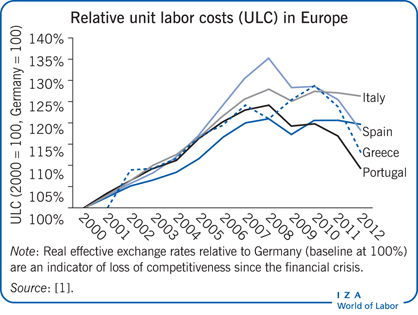Elevator pitch
Debate over labor market flexibility focuses mainly on firing costs, while largely ignoring wage determination and the need for collective bargaining reform. Most countries affected by the euro debt crisis have two-tier bargaining structures in which plant-level bargaining supplements national or industrywide (multi-employer) agreements, taking the pay agreement established at the multi-employer level as a floor. Two-tier structures were intended to link pay more closely to productivity and to allow wages to adjust downward during economic downturns, while preventing excessive earning dispersion. However, these structures seem to fail precisely on these grounds.
Key findings
Pros
In theory, two-tier wage bargaining structures could reconcile macroeconomic stability with a closer link between productivity and pay.
Two-tier bargaining structures may be rationalized as an intermediate step toward greater decentralization in wage setting.
In theory, the two-tier structure should allow for a higher frequency in wage renegotiation in response to shocks.
A two-tier structure can work if plant-level bargaining, if any, prevails over the national level, and wage floors are provided by statutory minimum wages.
Cons
Evidence from a European Central Bank firm-level survey suggests that two-tier regimes may result in the worst of both fully centralized and fully decentralized systems.
Two-tier systems do not seem to support the expansion of performance-related pay.
Two-tier systems do not permit adequate adjustment to temporary shocks by cutting wages and hours of work rather than laying off workers.
Where there are large productivity differentials, two-tier systems may reduce nominal wage dispersion but increase real wage dispersion.
